Location: Hoi An, Central Vietnam
My travels through Vietnam would take me from the South to the North, and Hoi An was my next stop. Located in the centre of Vietnam on the coast of the East Vietnam Sea (or the South China Sea, depending), Hoi An was designated a UNESCO World Heritage Site since 1999. The city is known for 4 things: its historic old town, its Japanese Bridge which is featured on Vietnamese currency, its lanterns which adorn every street & storefront and its tailor shops, which number in the thousands. You cannot walk 10 meters without encountering a tailor. Having custom clothes made while in the city is a quintessential part of visiting Hoi An. With over 1000 stores, it’s a bit overwhelming! If you happen to glance too long at the merchandise in one store, there’s someone rushing over trying to convince you to buy something. Often, a firm, no thank you, works just fine, but sometimes they are so insistent, you simply have to walk away.
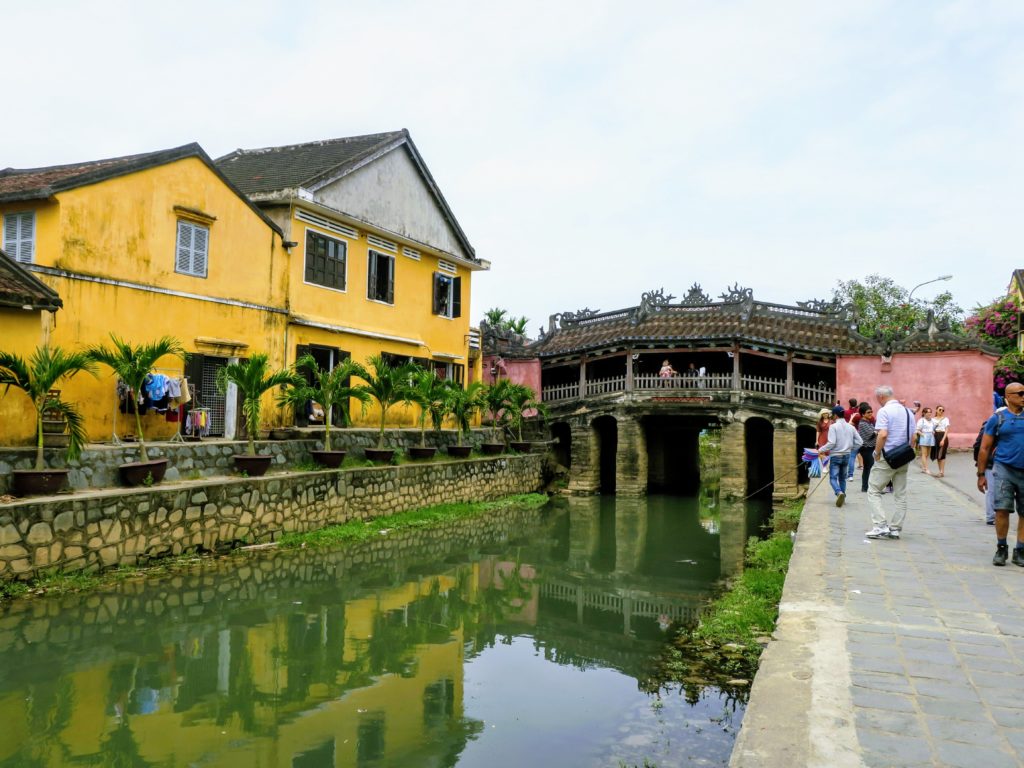 16th century Japanese Bridge, the symbol of Hoi An
16th century Japanese Bridge, the symbol of Hoi An
Hoi An has sometimes been referred to as the “Venice of Asia”, because of its waterways. While I’ve never been to Italy, I’m not quite sure that the comparison is accurate. However, it’s obvious that the water is a source of life for the people of Hoi An. It’s used in commerce, fishery and as a means of transportation to nearby villages.
 Local fisherman sail past the ancient town, wearing traditional non la (conical hat)
Local fisherman sail past the ancient town, wearing traditional non la (conical hat)
“Old Town Hội An, the city’s historic district, is recognized as an exceptionally well-preserved example of a South-East Asian trading port dating from the 15th to the 19th century, its buildings and street plan reflecting a unique blend of influences, indigenous and foreign (as per Wikepedia)”.
The British comedian Jack Whitehall has the best description of Hoi An: “Stuck in the past, gently crumbling but with a faded elegance”. That hits the mark exactly. The old town or ancient town as its often called, is an interesting mix of past and present. Historic building, the paint now chipped and fading, reminiscent of past affiliations with Chinese and French cultures now house tourist shops and eateries.
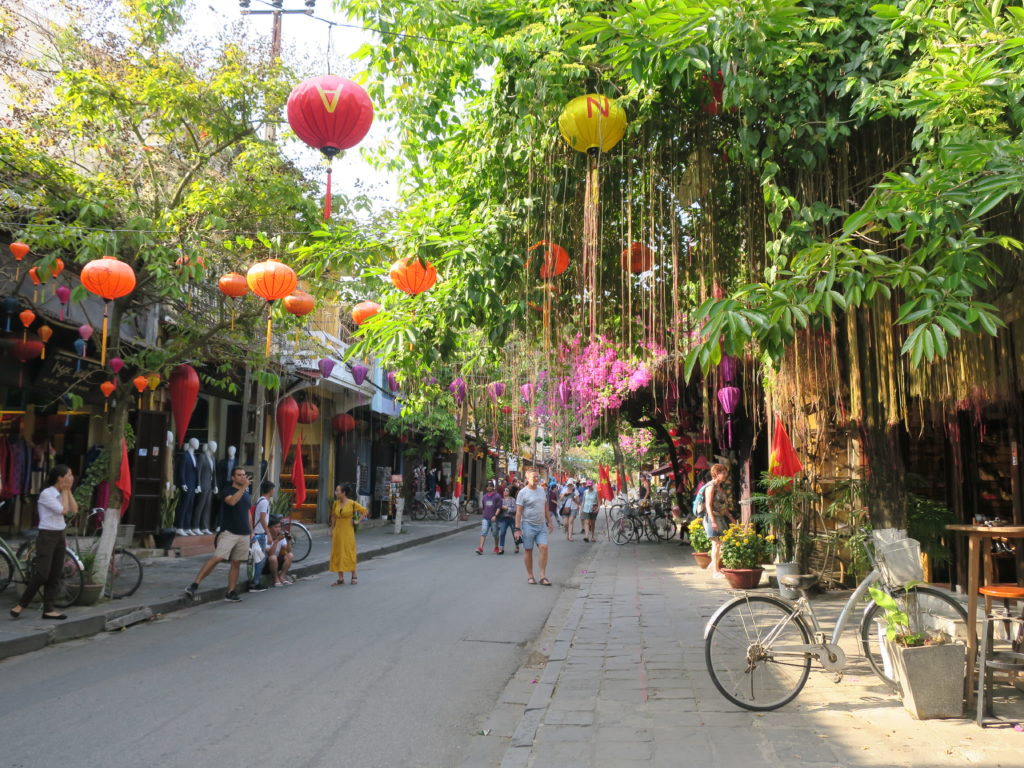
Luckily, this quaint city has retained its most elegant feature: lanterns. Everywhere you look, beautifully lanterns add colour and flair to this historical place. Fun and vibrant during the day, they cast a soft golden glow over the city in the evening. It’s really quite magical.
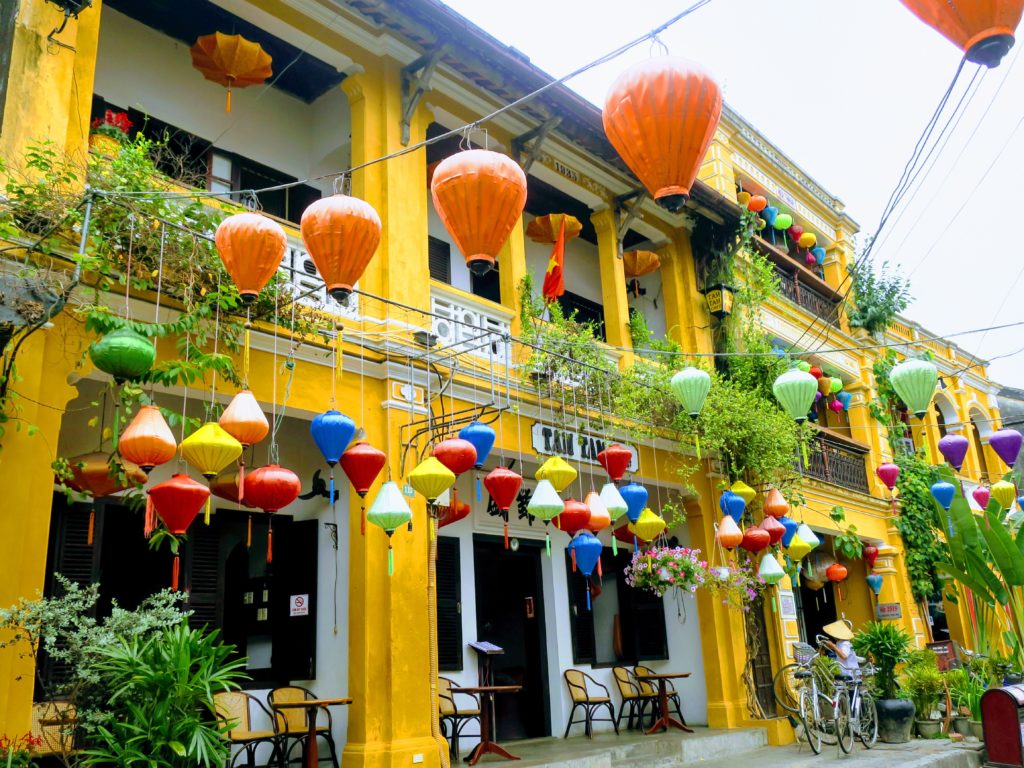
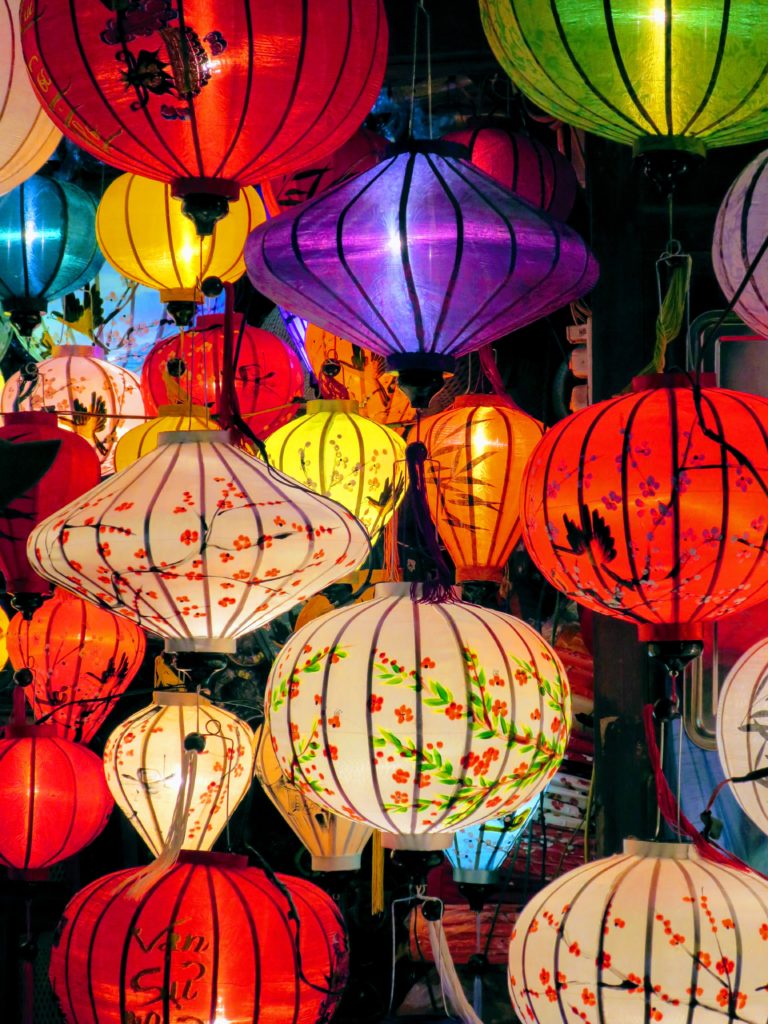
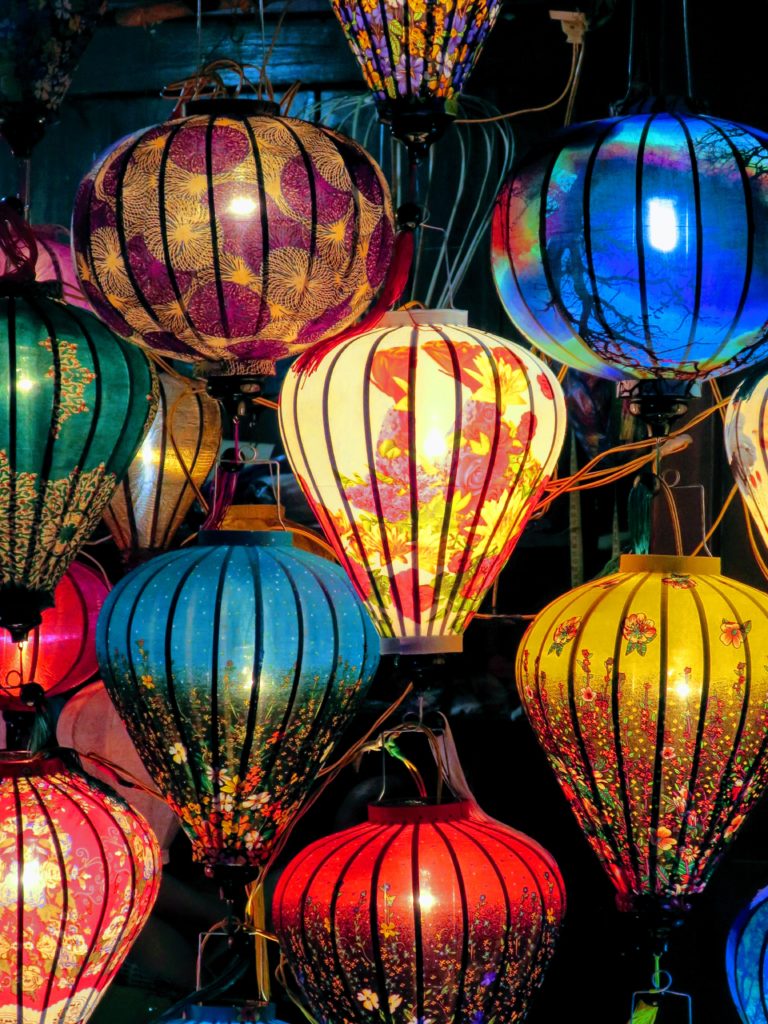
Hoi An at night: colour and light
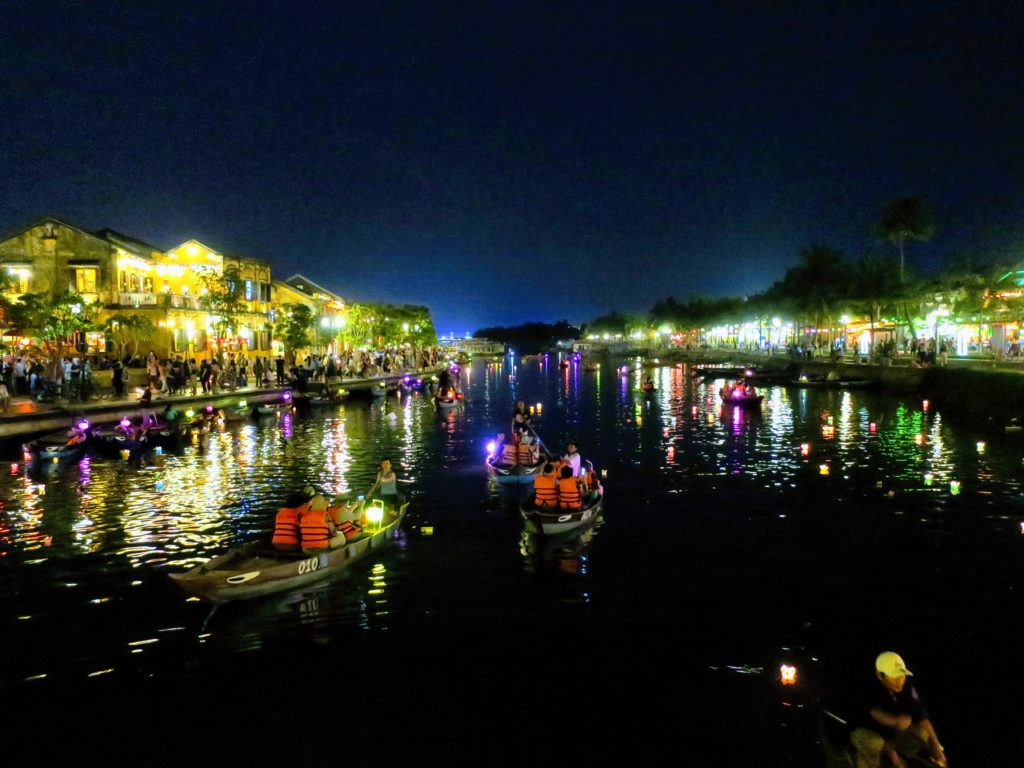
The city truly comes to life at night. Locals offer boat tours to foreigners, paper lanterns float on the water, all under the glow of thousands of lanterns. A big part of the nightlife of Hoi An is the night market, where food stalls and merchants selling souvenirs, clothes and goods gather in the streets.
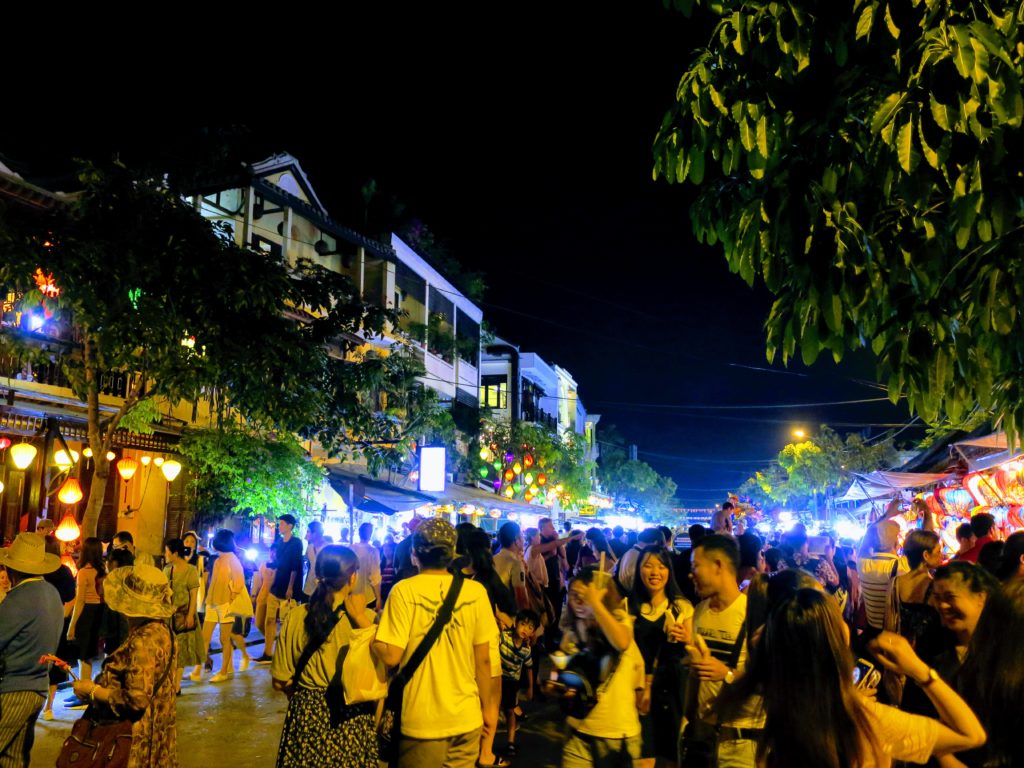 The market gets quite busy!
The market gets quite busy!
My favourite part of Hoi An was definitely the food! Street food culture is alive and well here. As well, there are plenty of markets selling fruits, vegetables, meats and even the day’s freshly caught seafood. Some sell their products in markets, while others set up shop on the sidewalk or even establish themselves as a mobile store, cycling or walking the streets with basketful of food.
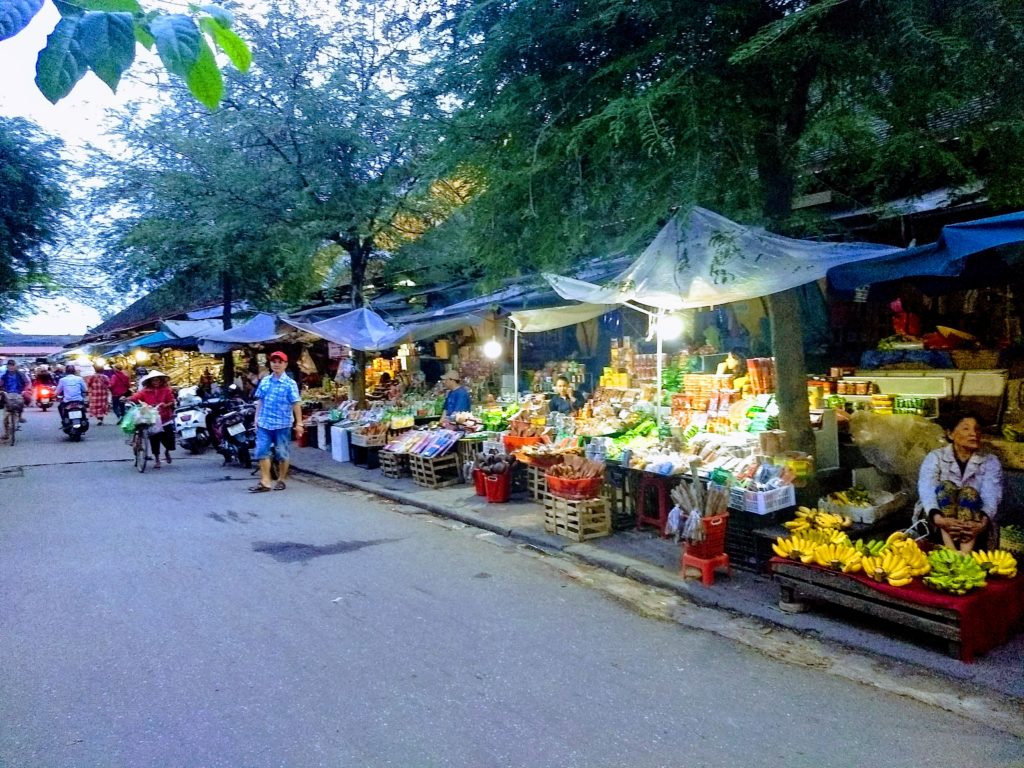
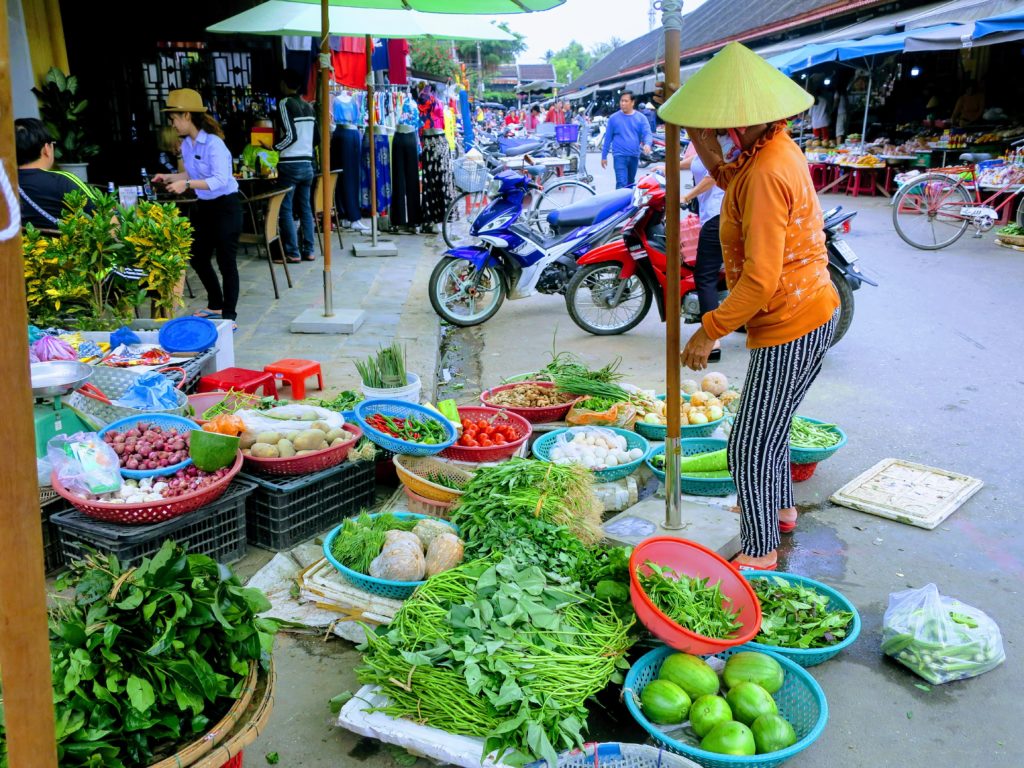
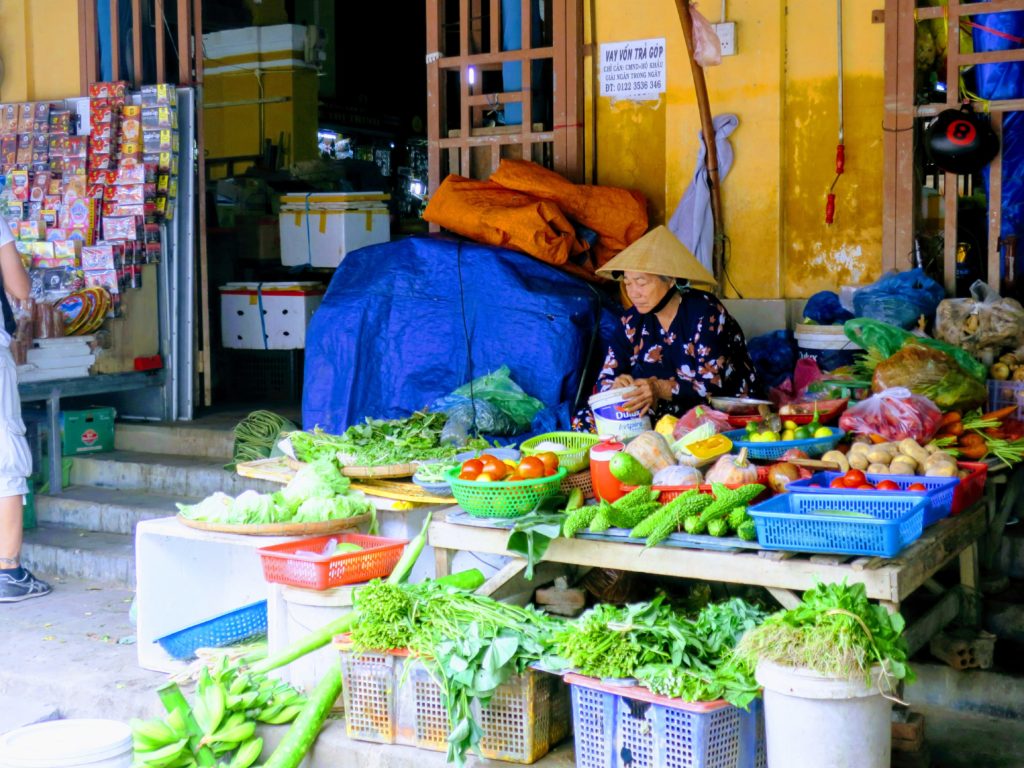
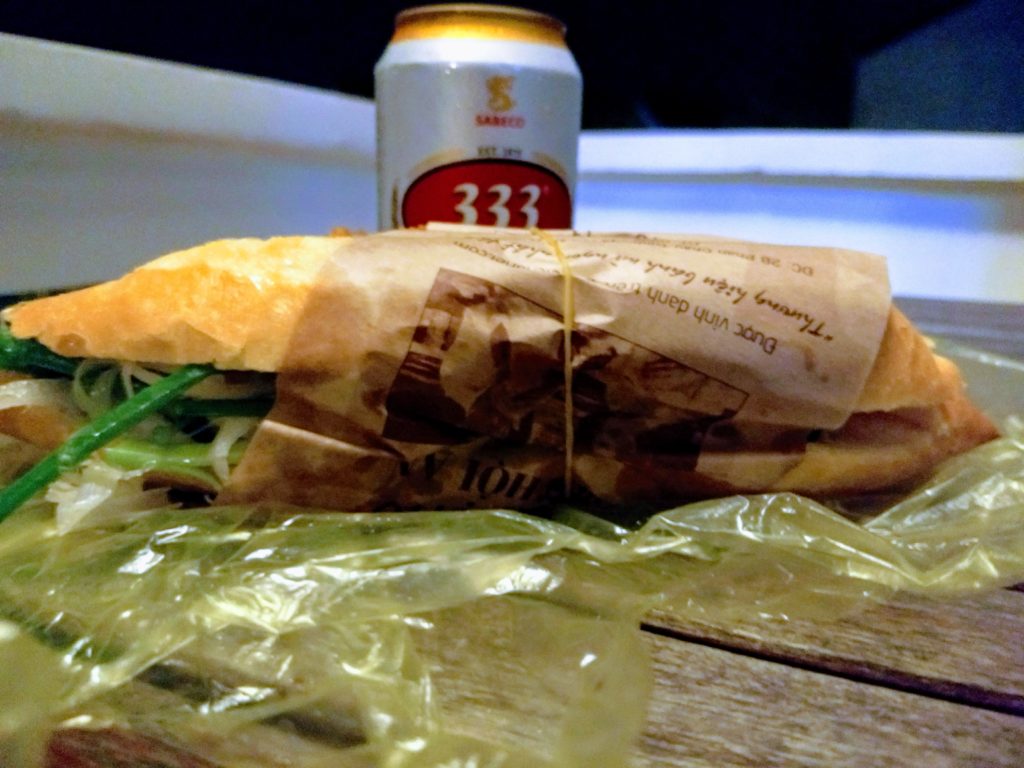 Banh Mi, the Vietnamese sandwich is a staple dish of local cuisine and one of the best stalls that serve it is in Hoi An. I stumbled upon this little gem by walking past and noticing the sizeable crowd in queue. I figured any place with such a line up must be worth it and it did not disappoint! Banh mi literally means bread (baguette), and is an airier & thinner version than our bread (and sooo delicious). There are many varieties of this delicious remnants of French colonization: chicken, pork belly, paté, egg, beef or a combination of any and all of the above. It’s also made with veggies such as pickled carrots, cucumber, cilantro and white radishes, along with sauces such as chilli sauce, mayo, cheese spread and a special sauce. The perfect food on the go! All this yummy goodness for barely 1$! And what’s a sandwich without something to wash it down…
Banh Mi, the Vietnamese sandwich is a staple dish of local cuisine and one of the best stalls that serve it is in Hoi An. I stumbled upon this little gem by walking past and noticing the sizeable crowd in queue. I figured any place with such a line up must be worth it and it did not disappoint! Banh mi literally means bread (baguette), and is an airier & thinner version than our bread (and sooo delicious). There are many varieties of this delicious remnants of French colonization: chicken, pork belly, paté, egg, beef or a combination of any and all of the above. It’s also made with veggies such as pickled carrots, cucumber, cilantro and white radishes, along with sauces such as chilli sauce, mayo, cheese spread and a special sauce. The perfect food on the go! All this yummy goodness for barely 1$! And what’s a sandwich without something to wash it down…
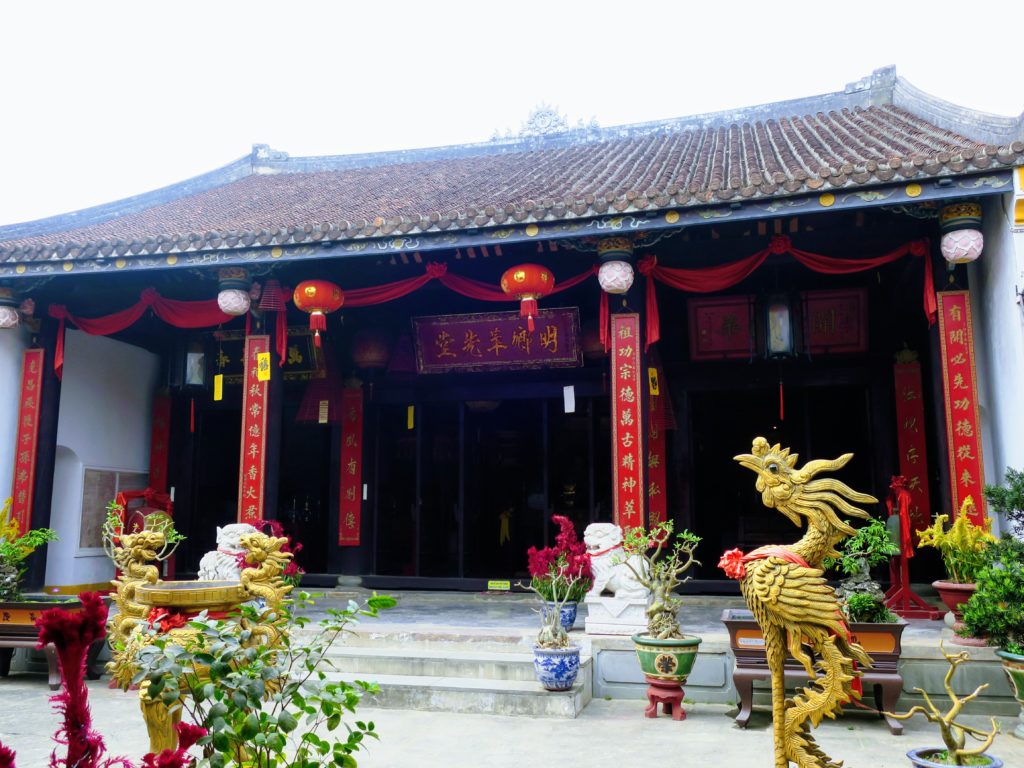

While Europe has churches, Asia has temples & pagodas! Buddhism is one of the main religions and Hoi An is dotted with pagodas for prayer and worship. Most have a Chinese influence and can be visited, strangely even while people are prayer, which is a little uncomfortable – tourists are clicking away taking photos while locals are going about their prayers.
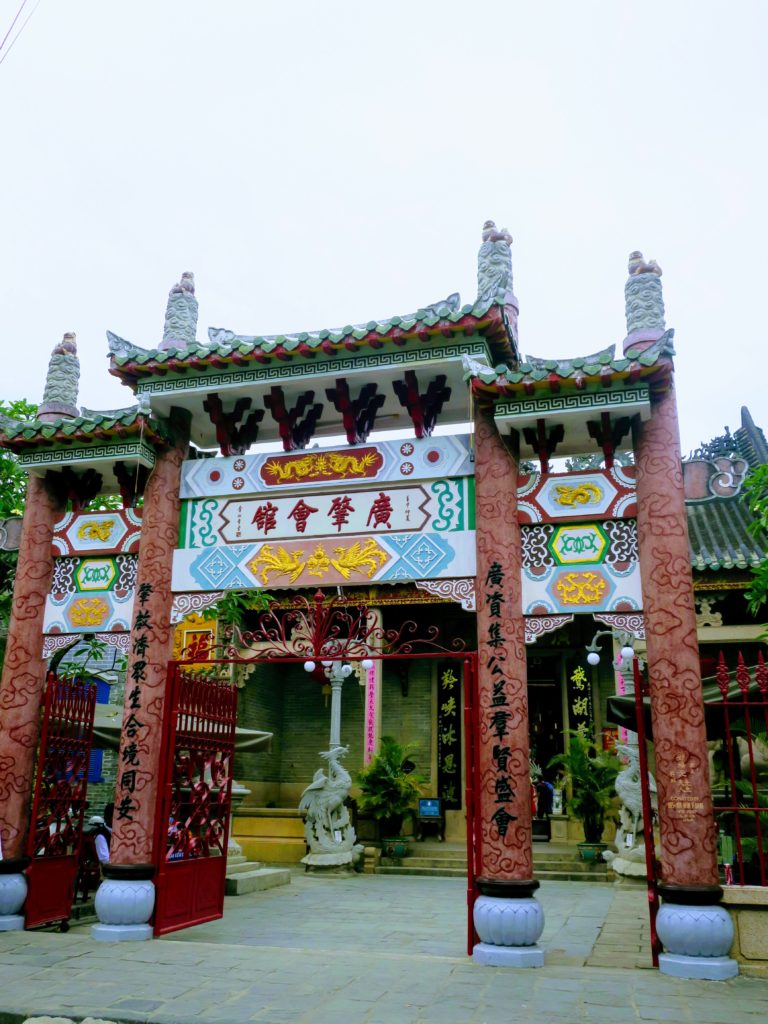
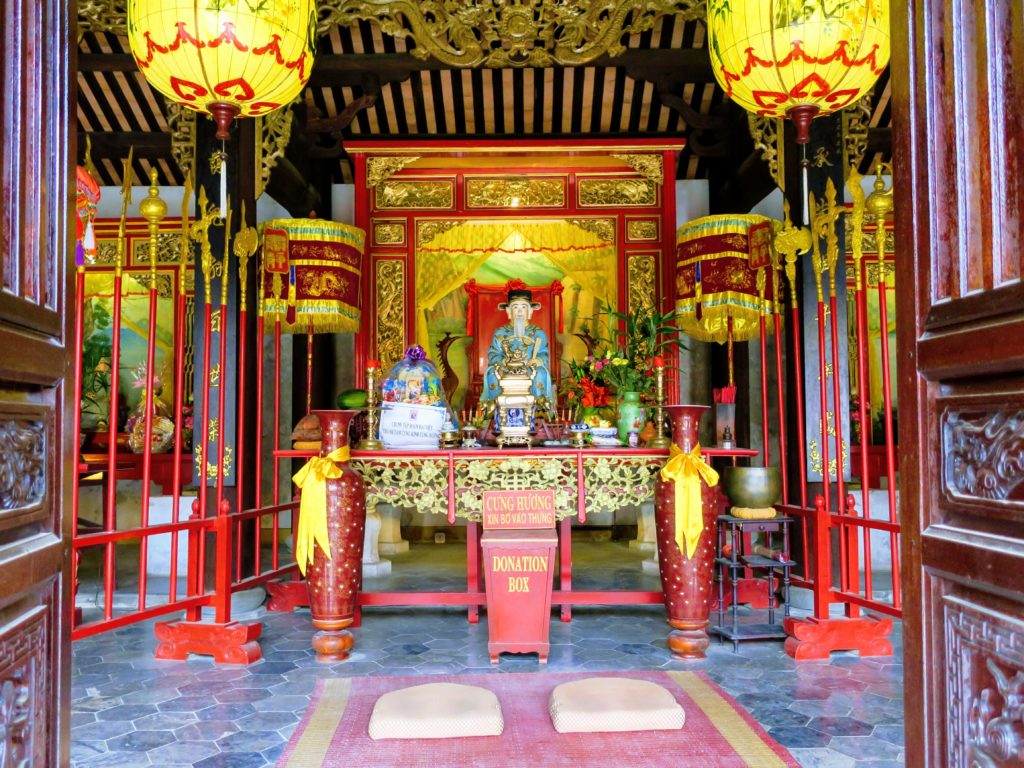
Hoi An was a wonderful city to visit – a city that’s emerging as a leader in tourism however not yet overwhelmed by its own success. The heart of the city, thought, are the locals. Wonderfully colourful and deeply authentic, they are the best part of Vietnam.
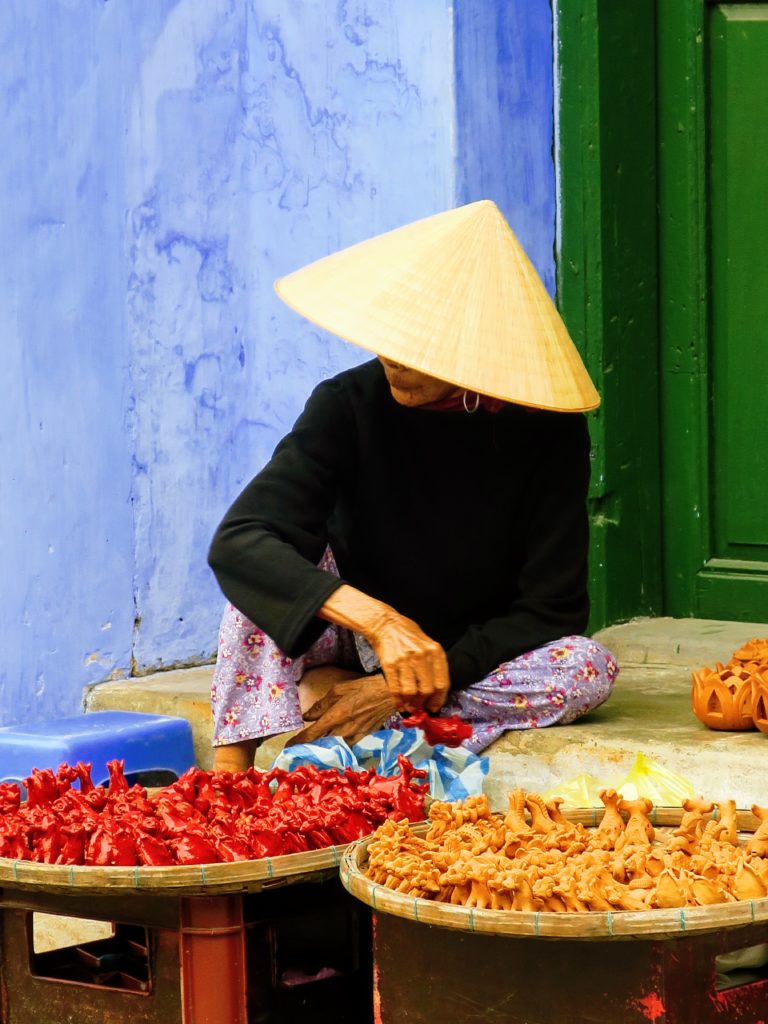

Que c est. beau….j adore Hoi An….Profites en…C est dépaysant.Pierre
Dépaysant, oui mais tellement excitant!